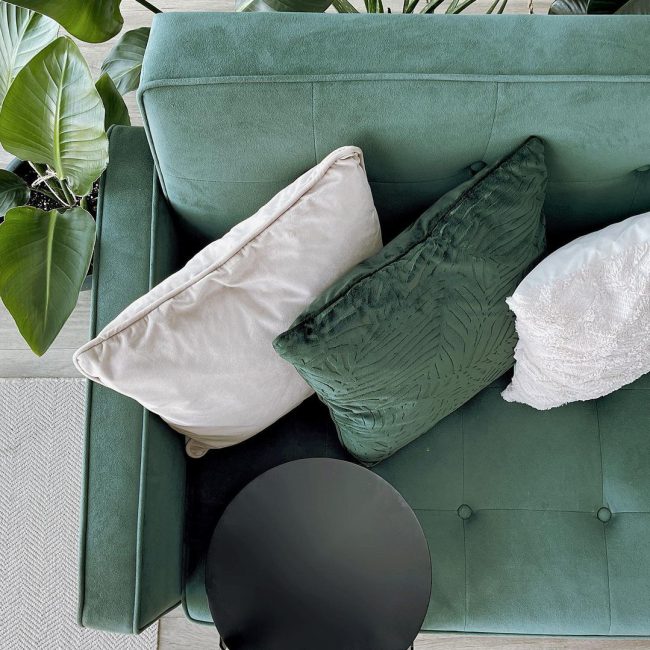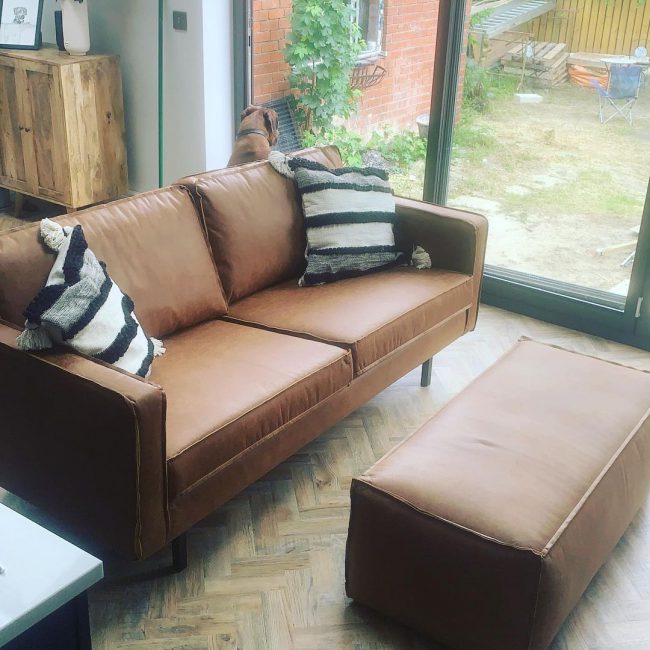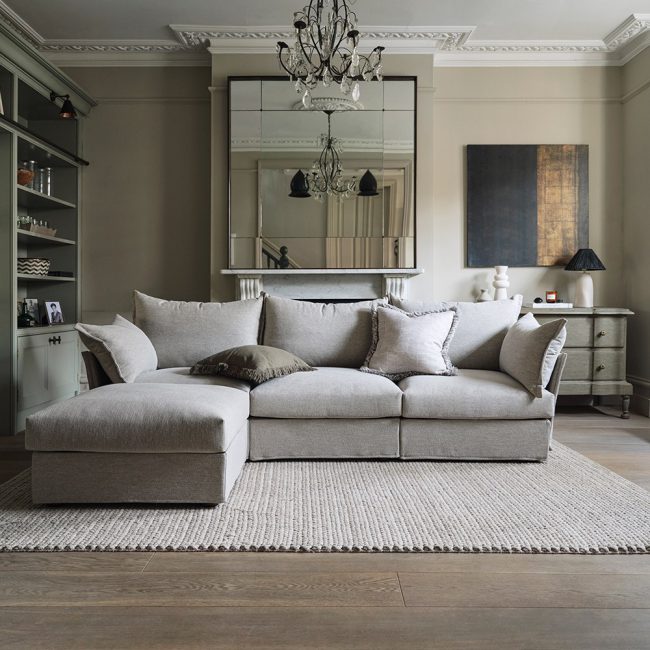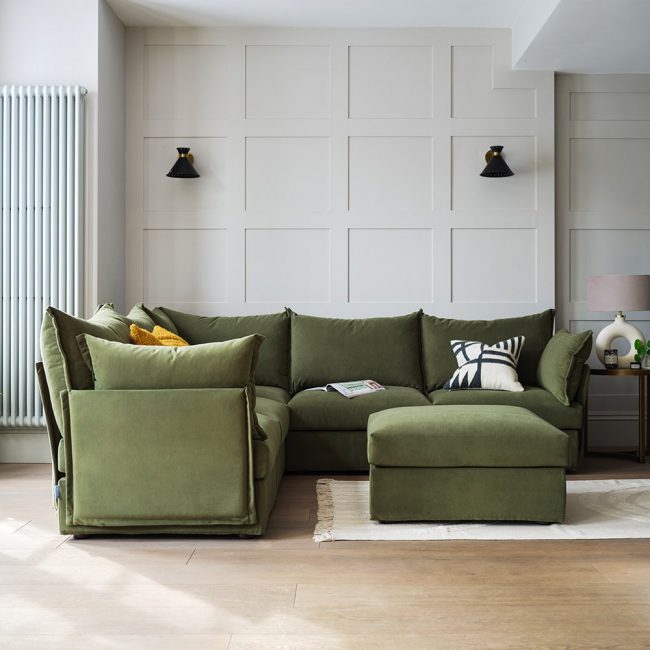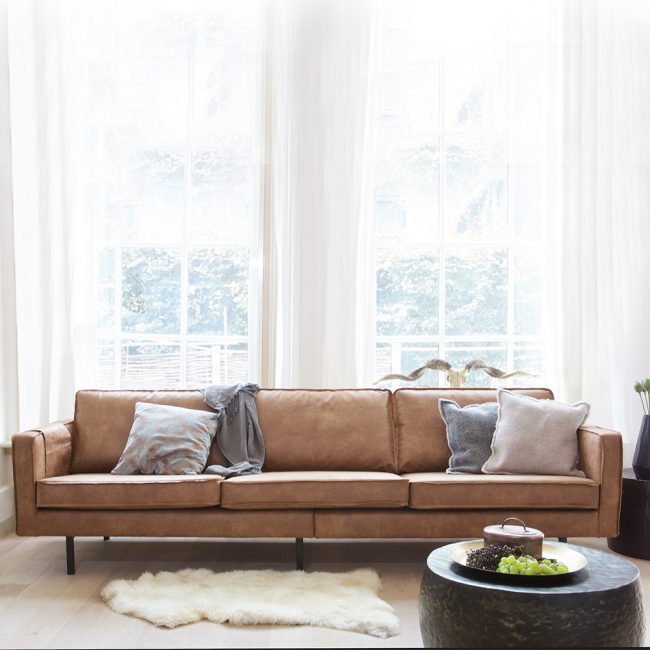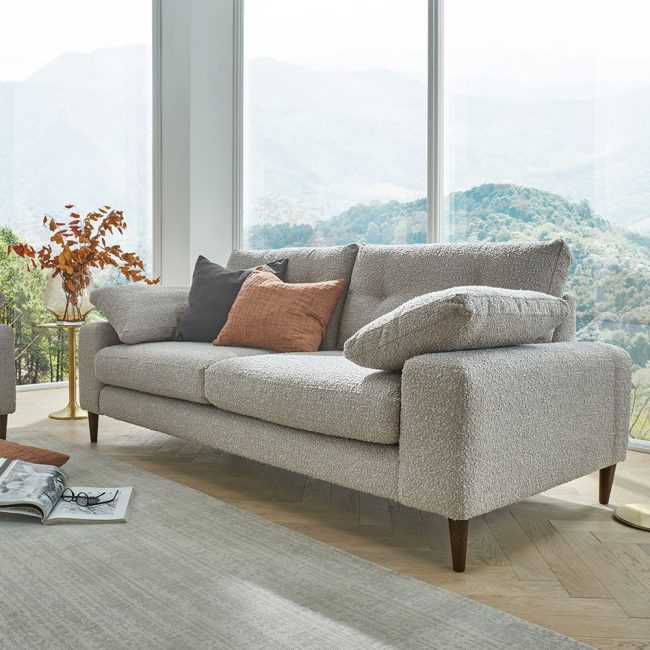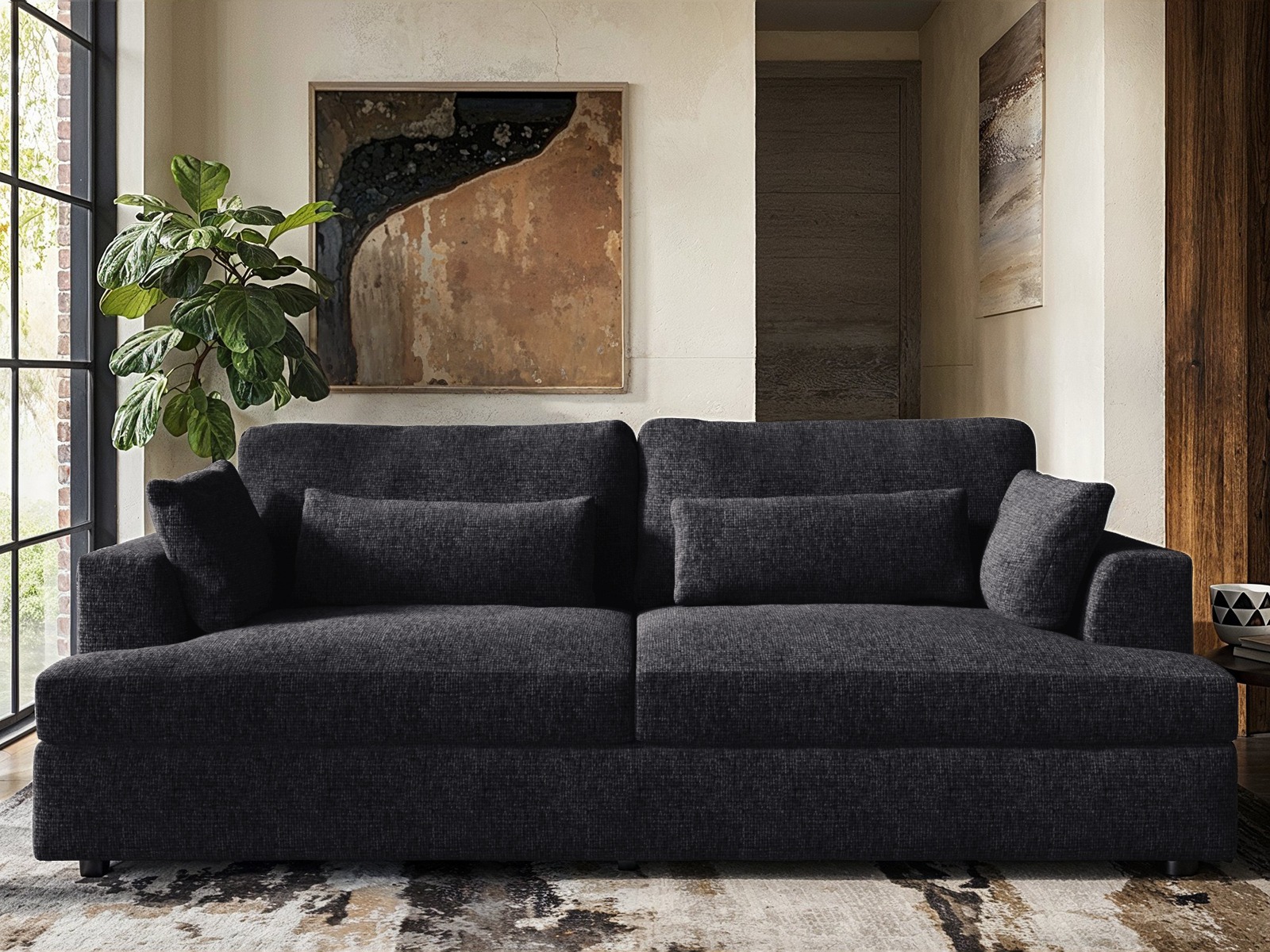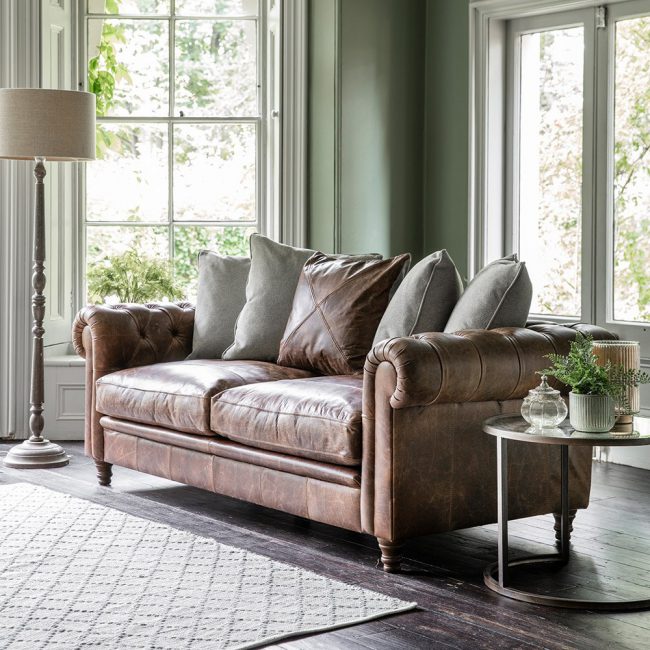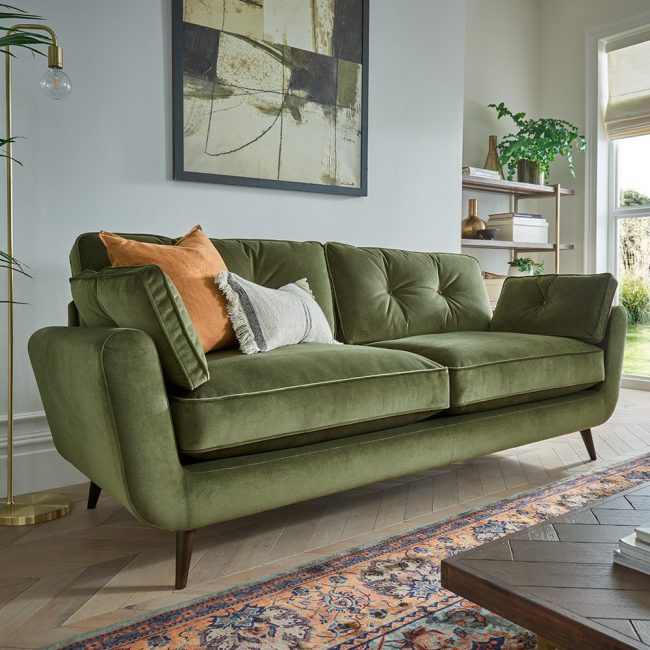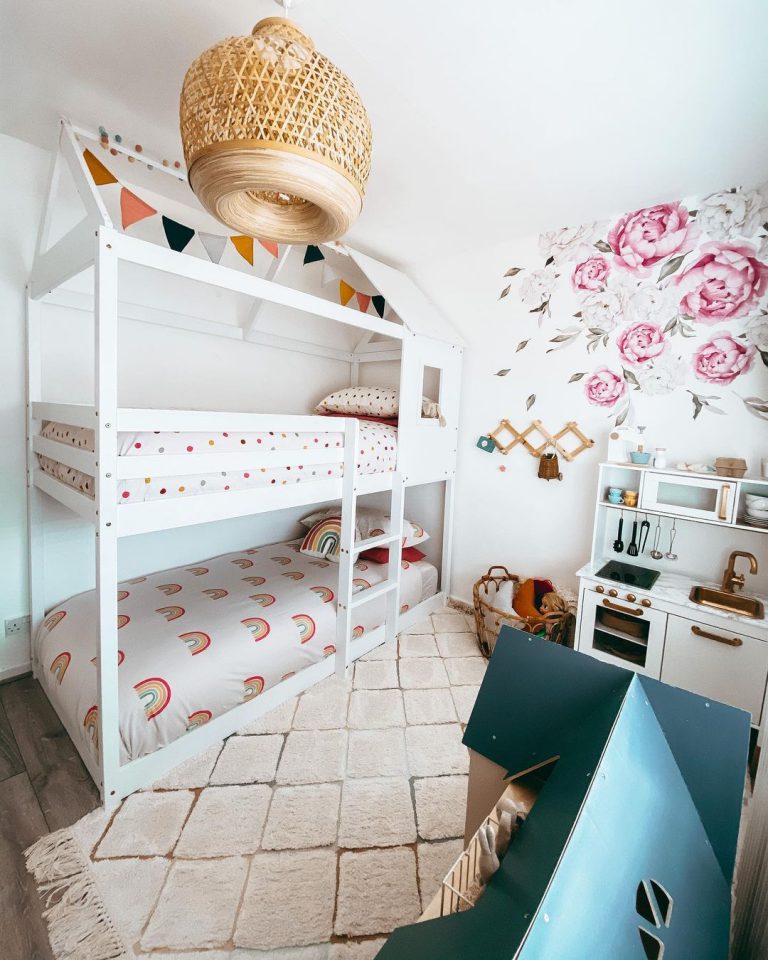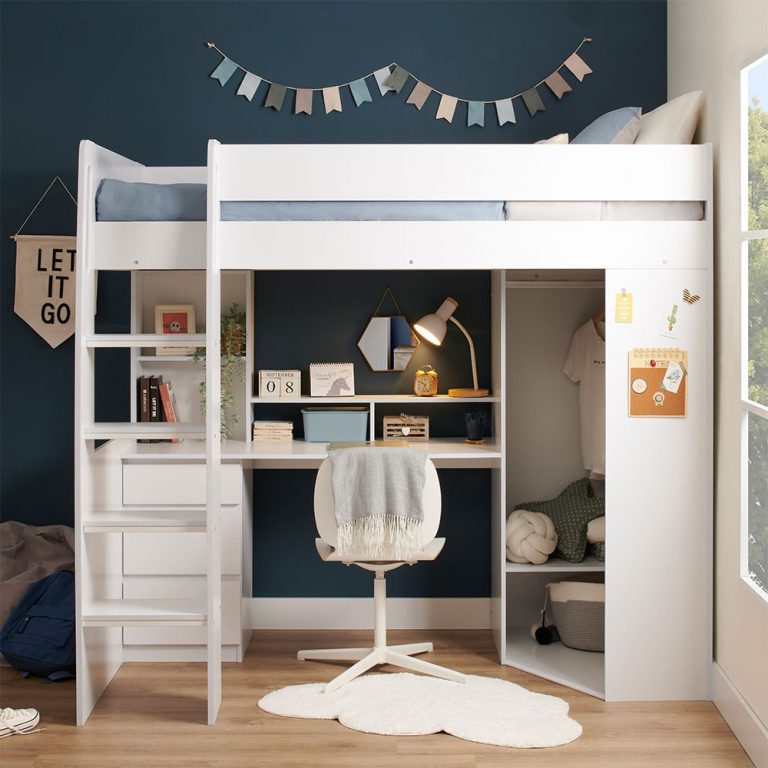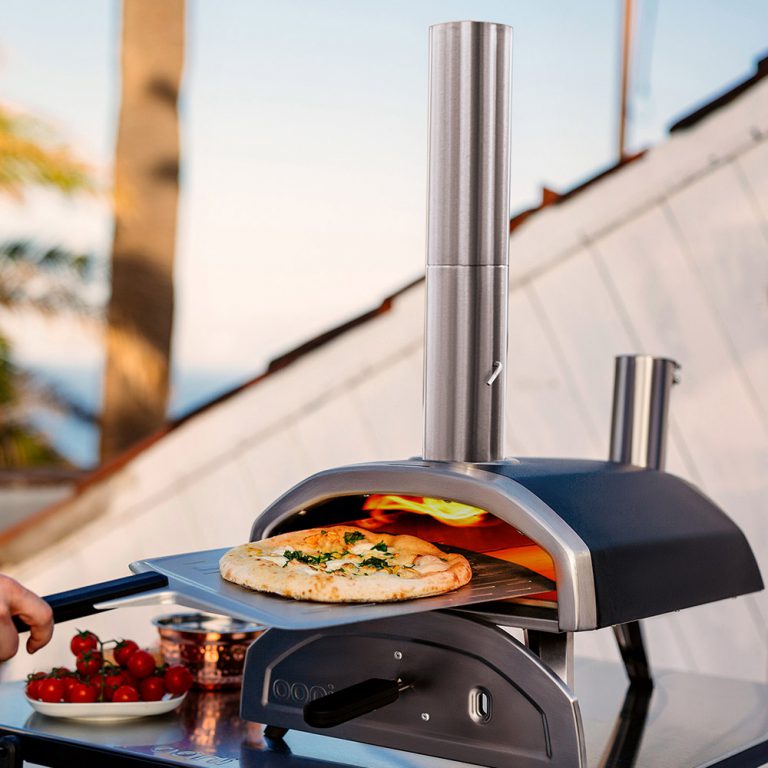How to Choose the Best Fabric for Your Sofa
One of the biggest considerations when choosing a new sofa is the fabric. You’ll want something which fits with your interior style – perhaps a bright velvet for a maximalist theme, or distressed leather for a rustic look.
You’ll also need to consider the practical element – especially if you have children or pets. Is the fabric wipe-clean or stain-resistant? Are the covers machine washable?
With so much to think about, we’ve put together this handy guide showcasing some of the best fabric material for sofaa, their advantages and disadvantages, our expert recommendations, and practical tips. Read on to discover the best fabric for sofa.
1. Linen
Linen is a lightweight, breathable fabric derived from natural fibers, such as those from the flax plant. Renowned for its durability and distinctive texture, linen sofas have a casual yet refined appearance that complements a variety of interior styles. Its natural origins make it eco-friendly, while its ability to stay cool and comfortable in warmer climates enhances its appeal. When blended with other materials, such as polyester or cotton, linen becomes even more durable and easier to maintain.
Pros:
- Breathable and Cool: Ideal for warmer climates or well-ventilated spaces.
- Natural Aesthetic: Adds a touch of understated elegance with a textured finish.
- Eco-Friendly: Made from renewable flax fibers.
- Long-Lasting: High-quality linen becomes softer and stronger with use.
Cons:
- Wrinkling: Prone to creasing, though blends reduce this issue.
- Special Care: Can require professional cleaning for stains.
- Higher Cost: Pure linen tends to be more expensive than synthetic options.
Ideal For:
- Families with children:
- Pet owners
- Formal living areas
Linen Sofas
2. Velvet
Velvet is a plush, opulent fabric that creates a soft, smooth texture. Traditionally made from silk, modern velvet sofas are often crafted using cotton, polyester, or a blend of synthetic fibers, making them more accessible and durable. Velvet’s distinctive sheen and depth of colour make it a favored fabric for bringing sophistication and character to interior spaces. Despite its delicate feel, high-quality velvet can be surprisingly durable and long-lasting.
Pros:
- Luxurious Texture: Offers a soft, inviting feel
- Rich Colours: The pile structure reflects light beautifully, enhancing colour vibrancy.
- Durability: Modern velvet blends are resistant to wear and tear.
- Versatility: Complements both modern and traditional interiors.
Cons:
- High Maintenance: Prone to attracting dust and pet hair, requiring regular cleaning.
- Stains Easily: Without stain protection, spills can be challenging to manage.
- Cost: High-quality velvet, especially pure silk velvet, can be expensive.
Ideal For:
- Formal living rooms
- Pet-free homes
- Cozy corners
Velvet Sofas:
3. Leather
Leather is a timeless, durable material crafted from animal hides. Known for its natural texture and smooth finish, leather sofas have been a popular choice for upholstery for centuries. Modern tanning techniques enhance its durability, making it resistant to wear and easy to maintain. Available in various finishes, from soft aniline to treated top-grain, leather provides options to suit different lifestyles and preferences.
Pros:
- Natural durability: Resistant to wear and general aging.
- Easy to clean: Spills can often be wiped away with minimal effort.
- Ages gracefully: Develops a unique patina over time, enhancing its character.
- Classic appeal: Suits a wide range of interior styles, from modern to traditional.
Cons:
- High cost: Quality leather is more expensive than most fabric options.
- Temperature sensitivity: Can feel cold in winter and warm in summer.
- Prone to scratches: Susceptible to marks from sharp objects or pet claws.
- Limited colour options: Usually available in neutral tones like black, brown, or cream.
Ideal for:
- Formal living rooms
- Homes without pets
- Low-maintenance households
Leather Sofas:
4. Bouclé
Bouclé is a textured fabric made from looped yarns that create a soft, nubby surface. Its unique appearance gives it a cosy, tactile quality that adds depth and warmth to any space. Popular in mid-century and modern design, bouclé is often crafted from a blend of wool, polyester, and other fibres, balancing durability with comfort. Its understated elegance makes it a favourite for minimalist and contemporary interiors.
Pros:
- Unique texture: Adds visual interest and a soft, cosy feel.
- Durability: The looped yarn structure resists wear and tear.
- Warmth: Provides a snug, inviting look and feel, perfect for colder seasons.
- Versatility: Complements both modern and retro interior styles.
Cons:
- Maintenance: Can be difficult to clean due to its textured surface.
- Prone to snagging: Looped fibres can catch on sharp objects or pet claws.
- Higher cost: Quality bouclé fabrics may come at a premium.
Ideal for:
- Modern or minimalist interiors
- Low-traffic rooms
- Pet-free homes
Bouclé Sofas:
5. Cotton
Cotton is a popular choice for upholstery, often considered one of the best fabric materials for sofas due to its soft texture, breathability, and versatility. As a natural fiber, cotton brings a timeless charm to interiors and is available in a variety of weaves, patterns, and colours. While it’s known for being lightweight and comfortable, it can also be blended with synthetic fibers to improve its durability and resistance to wear.
Pros:
- Soft and breathable: Provides a cozy, comfortable feel, especially in warmer climates.
- Eco-friendly: A renewable natural fiber, making it a sustainable option.
- Versatile: Suitable for both traditional and modern interiors.
Cons:
- Prone to stains: May require stain treatment or slipcovers for added protection.
- Susceptible to fading: Prolonged exposure to sunlight can cause discolouration.
Ideal for:
- Casual family rooms
- Homes without pets or young children
- Eco-conscious buyers
6. Wool
Wool is a highly durable and cosy fabric, often regarded as the best cloth for sofas in colder climates. As a natural fibre, it provides excellent insulation and texture, making it a favourite for creating warm, inviting spaces. Wool blends are commonly used in upholstery, as they enhance the material’s strength and ease of maintenance.
Pros:
- Durable and long-lasting: Resists pilling and maintains its structure over time.
- Naturally stain-resistant: Wool’s fibres repel liquids, making it easier to clean.
- Warm and inviting: Perfect for creating a snug atmosphere.
Cons:
- May feel coarse: Pure wool can be slightly rough, though blends soften it.
- Requires special care: Professional cleaning may be needed for deep stains.
Ideal for:
- Formal living areas
- Homes in colder climates
- Cosy spaces like reading nooks or lounges
7. Polyester
Polyester is one of the most commonly used synthetic materials in upholstery, valued for its durability, affordability, and resistance to wear. Often blended with natural fibers, polyester enhances the longevity and functionality of sofa fabrics. It’s widely recognized as the best material for sofas in high-traffic homes due to its ability to resist wrinkles, fading, and stains.
Pros:
- Highly durable: Withstands heavy use, making it ideal for busy households.
- Fade-resistant: Maintains its colour even with prolonged sun exposure.
- Easy to clean: Stain-resistant properties simplify maintenance.
Cons:
- Can pill over time: Prolonged use may cause surface fibers to form small balls.
- Lacks breathability: May feel warmer in hot climates compared to natural fabrics.
Ideal for:
- Family homes with kids or pets
- Modern or minimalist interiors
8. Chenille
Chenille is a soft, plush fabric with a velvety texture, often crafted from a blend of cotton, polyester, or acrylic fibers. Its name, meaning “caterpillar” in French, reflects its fuzzy, luxurious feel. Chenille is a popular choice for homeowners seeking a comfortable and cozy fabric for their sofa, combining visual appeal with durability. Its textured surface catches the light beautifully, adding depth and richness to any interior.
Pros:
- Soft and cozy: Provides a plush, inviting feel that’s perfect for lounging.
- Durable: Blended chenille fabrics resist wear and maintain their structure over time.
- Stylish texture: Adds depth and warmth to any living space.
- Versatile: Available in a variety of colours and patterns to suit different design styles.
Cons:
- Prone to snagging: The loops in chenille can catch on sharp objects or pet claws.
- Sensitive to spills: Requires quick action to prevent stains from setting.
- Can fade: Prolonged exposure to direct sunlight may cause discolouration.
Ideal for:
- Casual family rooms
- Homes without pets
Chenille Sofas:
9. Mixed Materials
Mixed materials combine the best properties of natural and synthetic fibers, creating fabrics that are durable, versatile, and easy to maintain. These blends are often considered one of the best materials for sofas because they offer a balance of comfort and practicality. Common combinations include cotton-polyester, linen-polyester, and wool blends, which enhance durability while retaining the softness and texture of natural fibers.
Pros:
- Durable: Enhanced strength from synthetic fibers, ideal for heavy use.
- Easy to clean: Often features stain-resistant or low-maintenance properties.
- Cost-effective: More affordable than pure natural fabrics while retaining comfort.
- Versatile: Available in a wide range of textures, patterns, and colours.
Cons:
- Less breathable: Some blends can feel warmer than pure natural fabrics.
- Synthetic sheen: May lack the organic look of pure natural fibers.
Ideal for:
- Family rooms
- Homes with pets or children
- Tight budgets
10. Eco-Friendly Fabric
Eco-friendly fabrics are crafted with sustainability in mind, using renewable resources, recycled materials, or minimal processing. These options are perfect for those seeking the best sofa material that aligns with environmentally conscious values. Fabrics like organic cotton, hemp, and recycled polyester offer durability and style while reducing your ecological footprint.
Pros:
- Sustainable: Made from renewable or recycled resources, reducing environmental impact.
- Chemical-free: Often processed without harmful toxins, making them safe for families.
- Unique texture: Natural fibers provide distinct, organic aesthetics.
Cons:
- Higher cost: Often more expensive due to ethical production processes.
- Limited availability: Fewer colour and pattern options compared to synthetic blends.
Ideal for:
- Eco-conscious households
- Formal living areas
- Rustic or minimalist interiors
Factors to Consider When Choosing Best Fabric for Sofa
Here are the key factors to consider when selecting the best fabric material for a sofa that aligns with your lifestyle and home environment:
Durability
Durability is a crucial factor, especially if your sofa will see frequent use. The strength of a fabric is often measured by its rub count, which indicates how much wear it can handle. For high-traffic areas, fabrics with a higher rub count, such as polyester blends or performance materials, are ideal. These options are commonly recognized as the best material for sofas in busy households.
Recommended Fabrics:
- Performance fabrics (e.g., Crypton, Sunbrella)
- Microfiber
- Polyester blends
- Leather (top-grain or faux leather)
Comfort
Comfort is defined by the texture and feel of the fabric. Soft options like chenille or cotton blends provide a cozy experience, while breathable fabrics such as linen are great for warmer climates.
Recommended Fabrics:
- Cotton and cotton blends
- Linen
- Chenille
- Velvet
Maintenance
The ease of cleaning is a critical consideration. Stain-resistant fabrics like microfiber or performance materials simplify maintenance, while options like linen or wool may require professional care. Choosing a fabric that matches your cleaning preferences will help you find the best fabric material for a sofa suited to your needs.
Recommended Fabrics:
- Microfiber
- Leather
- Polyester blends
Aesthetics
The best cloth for a sofa should complement your home’s interior design. Consider colours and patterns that align with your décor style. Neutral tones work well for versatility, while textures like velvet or bouclé add depth.
Recommended Fabrics:
- Velvet
- Linen
- Bouclé
- Wool blends
Lifestyle Considerations
Your lifestyle—whether you have children, pets, or specific allergies—plays a big role in fabric selection.
For Families with Children:
- Microfiber
- Leather
For Pet Owners:
- Microfiber
- Tightly woven fabrics
- Leather (may scratch)
For Allergy Concerns:
- Synthetic fabrics
- Tightly woven cotton or linen
- Leather
Maintenance and Care Tips
- Vacuum your sofa regularly to remove dust and debris. Use a soft brush attachment to avoid damaging the material.
- Address spills promptly by blotting with a clean cloth and using mild soap or a fabric-safe cleaner. For tougher stains, check the manufacturer’s cleaning recommendations for your specific sofa fabric.
- Delicate fabrics like wool or velvet may require professional cleaning to preserve their look and feel. This ensures your best cloth for a sofa remains in top condition over time.
- Slipcovers, armrest protectors, and fabric sprays can extend the life of your sofa. These protective measures are especially valuable for high-traffic areas or homes with kids and pets.
Best Fabric for Sofas | FAQs
What is the most durable fabric for a sofa?
The most durable sofa fabrics are performance materials like Crypton or Sunbrella, as well as microfiber and tightly woven synthetic blends. Leather, particularly top-grain leather, is also highly durable, making it ideal for high-traffic areas and families with children or pets.
What sofa material is easiest to maintain?
Microfiber and leather are the easiest sofa materials to maintain. Microfiber is stain-resistant, repels dust, and is simple to clean with a vacuum or damp cloth. Leather is also low-maintenance since spills can be wiped up quickly, though it may require occasional conditioning to prevent cracking.
Is 100% polyester good for sofa fabric?
Yes, 100% polyester is a good choice for sofa fabric due to its durability, stain resistance, and affordability. It resists fading and is easy to clean, making it suitable for families and high-traffic areas. However, it may lack the breathability of natural fabrics like cotton or linen.
Do fabric sofas last longer than leather?
Leather sofas generally last longer than fabric sofas due to their natural durability and resistance to wear. Fabric sofas, while comfortable, can show signs of wear and fading over time, especially in high-traffic areas. However, performance fabrics can rival leather in longevity when properly maintained.
How often should you wash a fabric couch?
A fabric couch should be vacuumed weekly to remove dust and debris, and deep-cleaned every 6–12 months depending on usage. Spot cleaning should be done immediately when spills occur to prevent stains. Always follow the manufacturer’s care instructions for specific fabrics.
Decided on your Favourite Sofa Fabric?
Whether you’re leaning towards velvet, leather or bouclé, if you want to talk over your options, email us at customerservice@cuckooland.com.
